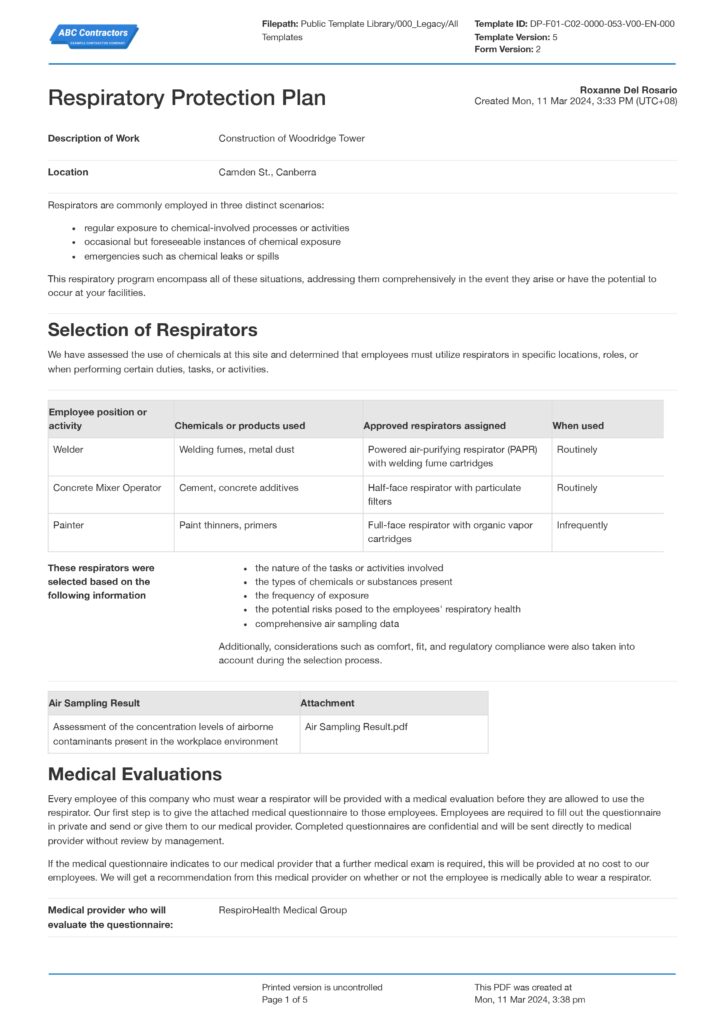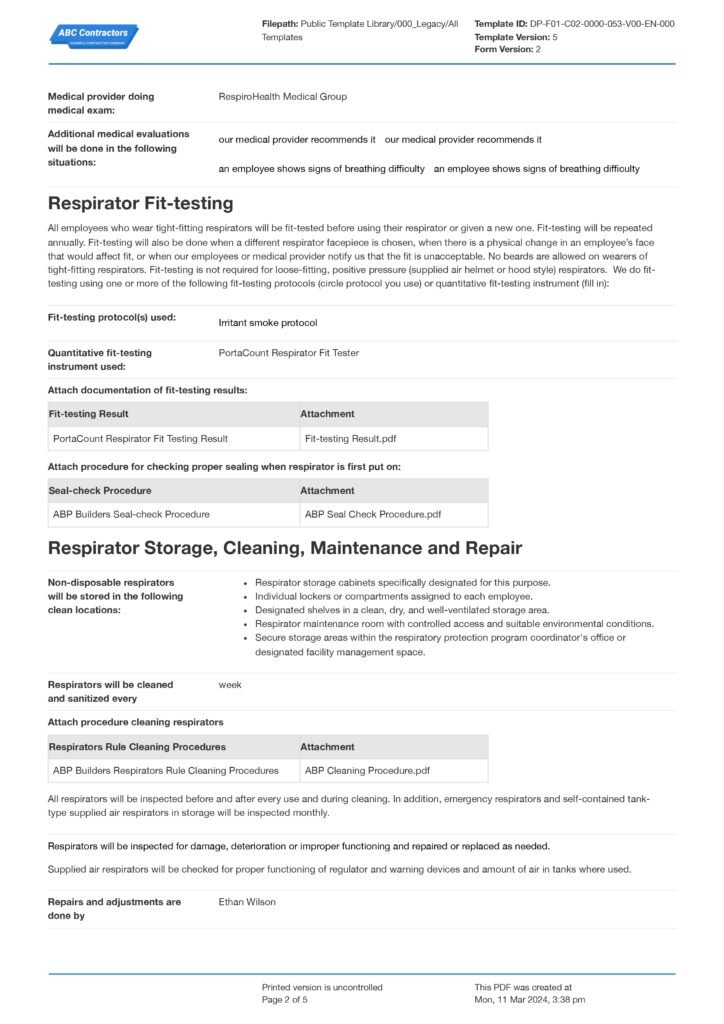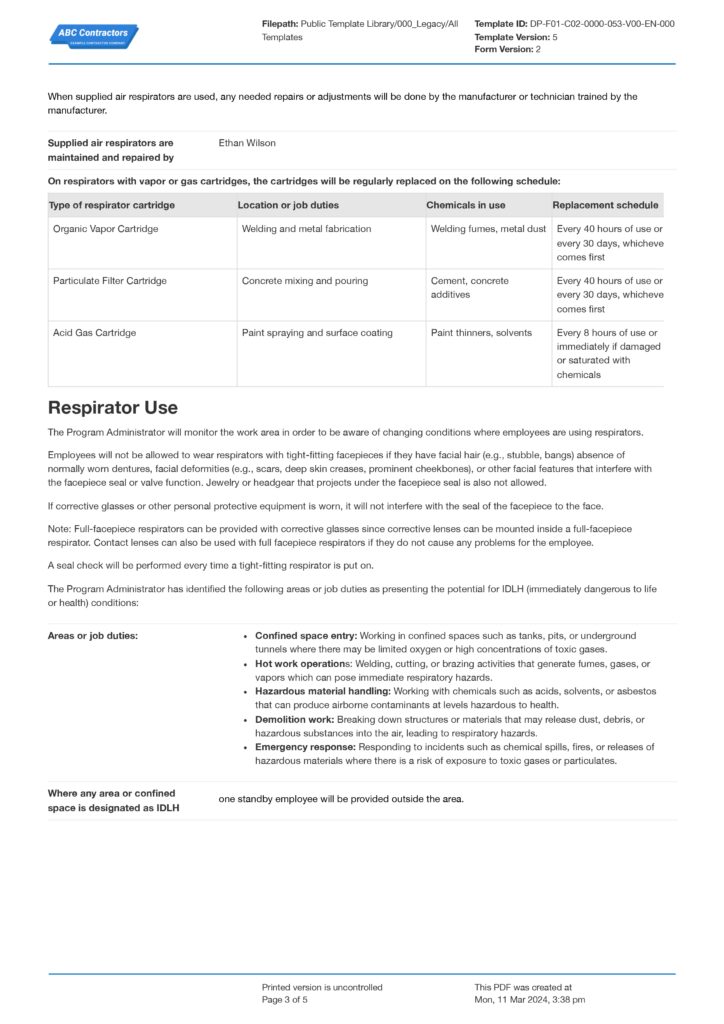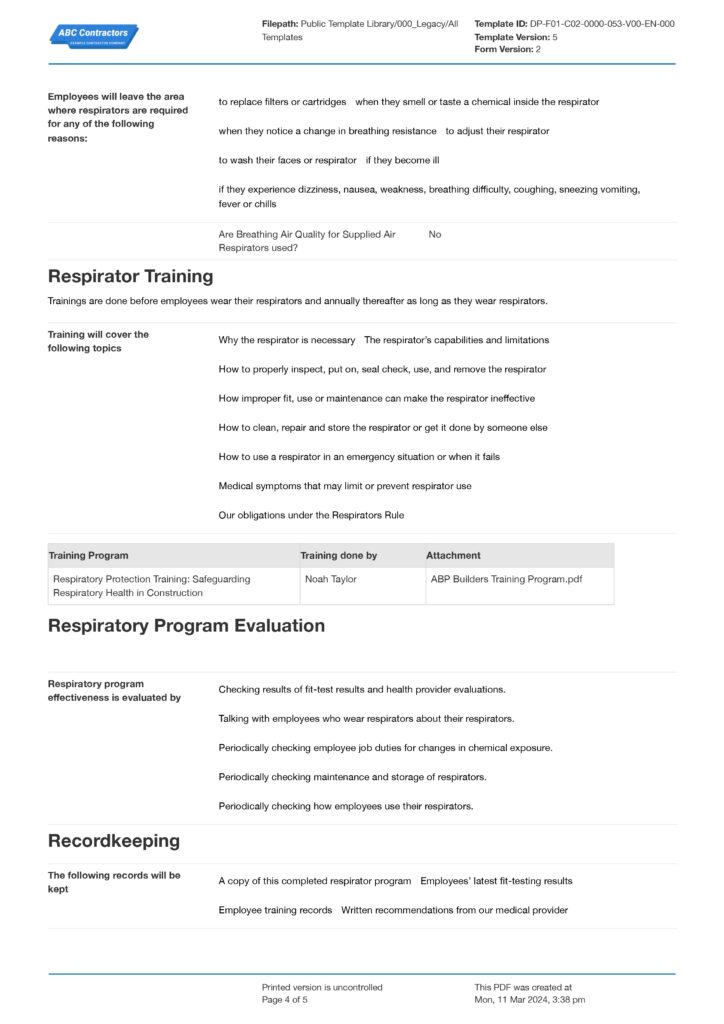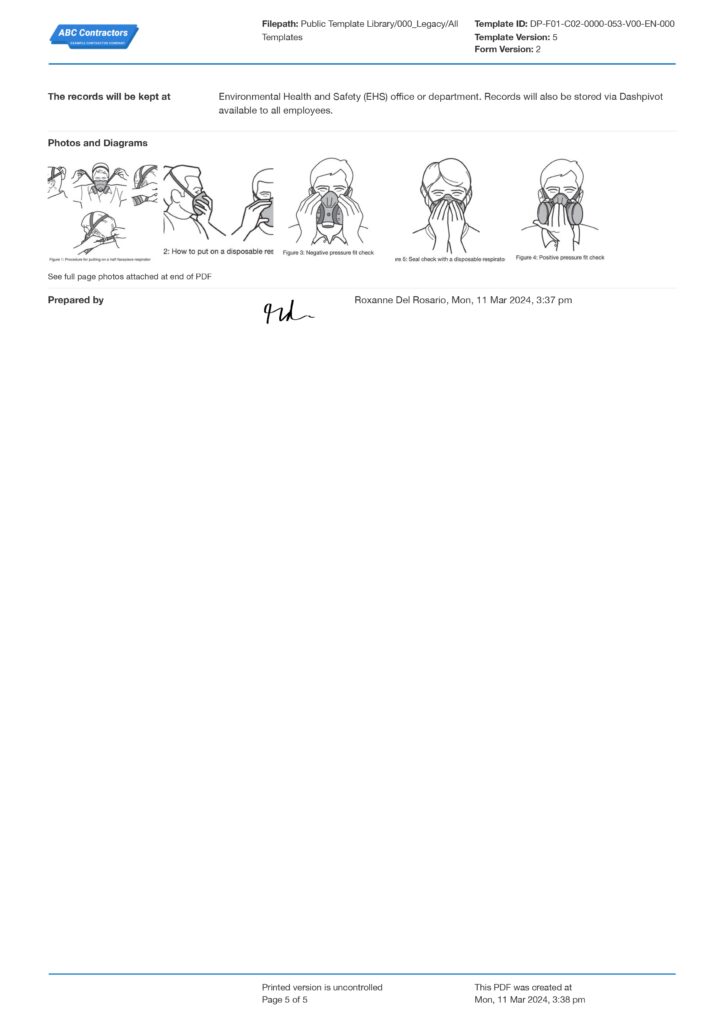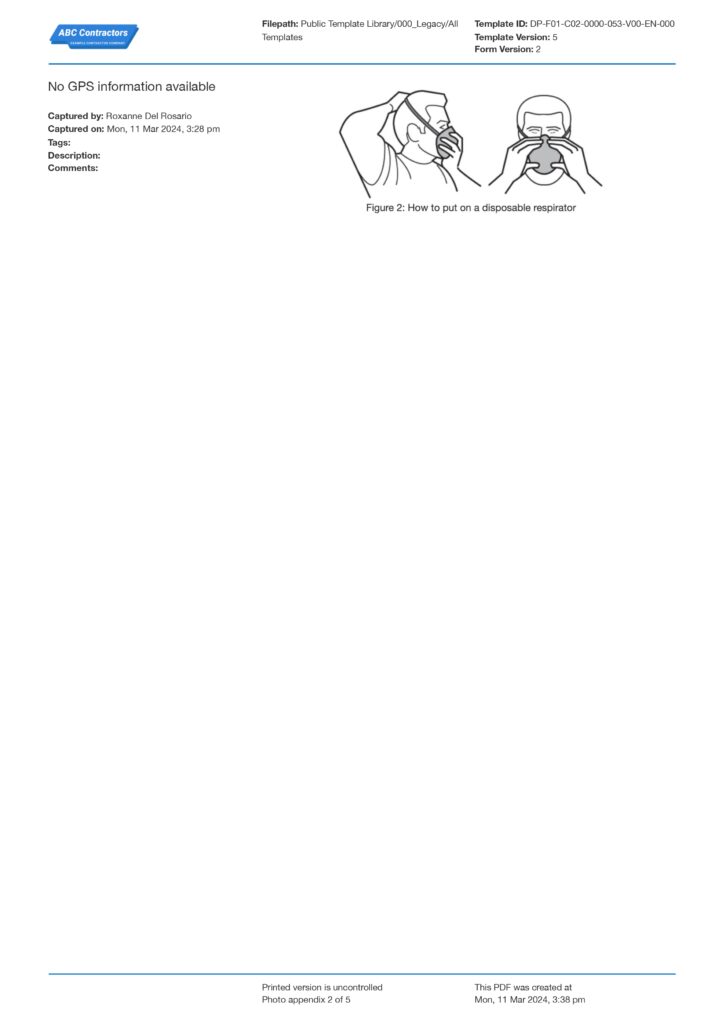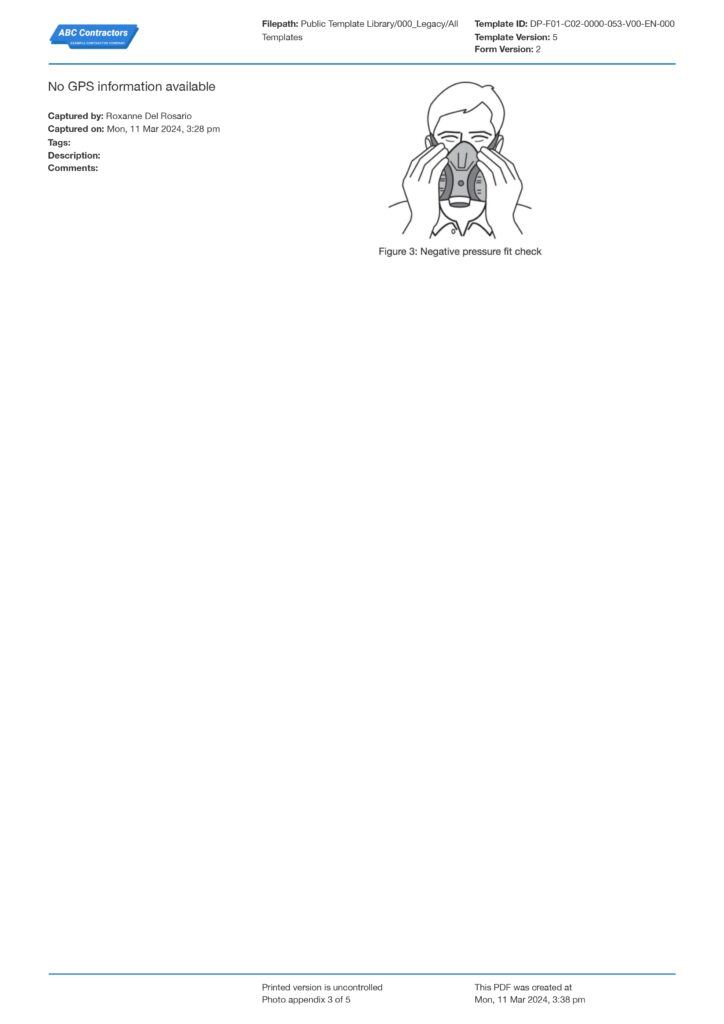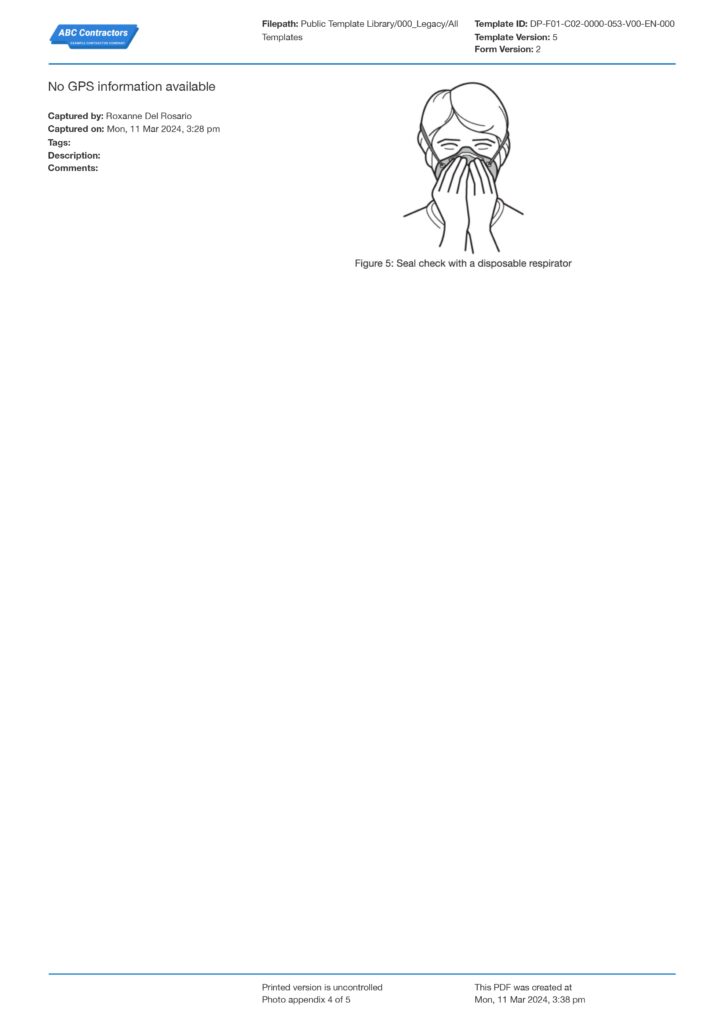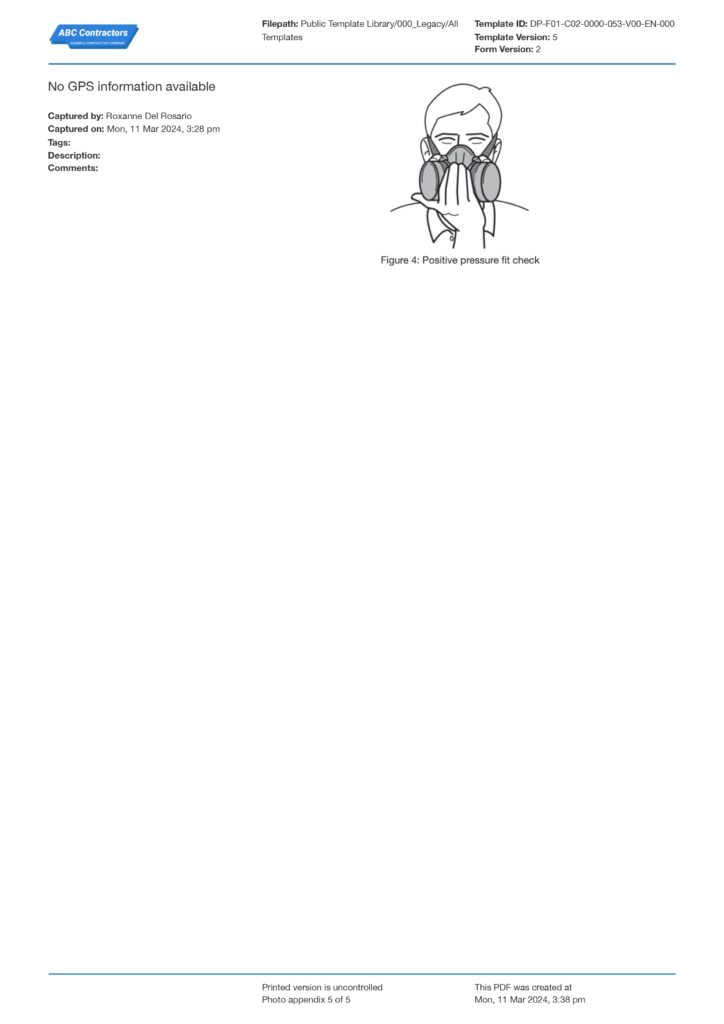Dashpivot Article – What is Respiratory Protection?

What is Respiratory Protection?
What is Respiratory Protection?
In the workplace, individuals are exposed to different kinds of contaminants in the air they breathe that is harmful to their health and safety and to protect them it is necessary to wear respiratory protection.
Respiratory protection are wearables that safeguards the workers from inhaling harmful airborne contaminants like dusts, molds, fumes or gases and in some cases gives breathable air or filters the air that a person breathes through the respiratory protector.
Respiratory protection that are used in the workplace is not just picked at random, there are different types that are designed according to a specific purpose.
This article will cover the main things you need to know regarding respiratory protection in the workplace like what does the law say about it, identifying the different types of respiratory protection and the different contaminants that it protects and finally how to design respiratory protection plan for your company.
What does the law say about Respiratory Protection?
All industries require legal compliance to continue businesses. In workplaces, regulatory bodies in most countries like OSHA or HSE (Health and Safety Executive) requires employers to implement a respiratory protection program or plan, especially in industries where employees are exposed to airborne contaminants or that oxygen levels are low. For our purpose, we’re just going to provide a summary for HSE and OSHA’s standard for respiratory protection.
For HSE, there is Control of Substances Hazardous to Health Regulations (COSHH) which imposes the legal responsibility for employers to provide respiratory protective equipment on top of the efforts to prevent and control employee’s exposure to the harmful substances. It also emphasizes the respiratory protective equipment RPE is adequate meaning that it is right for the hazard they are exposed to, can reduce exposure and it should be suitable for the wearer that it won’t disrupt their work and no added risk in their work area because of the RPE they are wearing.
For OSHA'S respiratory requirement, under respiratory equipment personal protective equipment standard 1910.134 there should be engineering controls implemented for “occupational diseases caused by breathing air contaminated with harmful dusts, fogs, fumes, mists, gases, smokes, sprays, or vapors, the primary objective shall be to prevent atmospheric contamination” when effective engineering controls are not feasible there should be a respirator provided to each employee that are applicable and suitable for the purpose intended.
Different Types of Respiratory Protection, Purpose and Contaminants
Respiratory Protective Equipment are similar across countries however can differ in names; the below respiratory protections are what’s typically found in global standards
Air Purifying Respirators (APRs)
These are filtering devices that uses filter, cartridges, or canisters that removes the contaminants like gases, vapors, aerosols from the air, through the special material that purifies the air that the user breaths. Typically, you can find these respiratory protectors used by the military, fire fighters and industry and the material that is used in APRs will depend on what specific contaminant the user needs protection on, it can trap solid materials or toxic gases and was known formerly as “gas mask”. However, it is important to note that APRs do not supply oxygen and cannot be used on work areas that are oxygen deficient.
There are three common APRs identified by OSHA but let’s also include what these are called in other places, and these are: Particulate Respirators, Gas & Vapor Respirators and Combination Respirators.
- Particulate Respirators – that protects the person from particulate materials such as dusts, mists and fumes but cannot protect the user from gases and vapors.Examples of these are:
- Filtering facepiece respirator (FFR) or sometimes these are called disposable respirators because it can be discarded when it’s not suitable for use anymore. According to National Institute for Occupational Safety and Health (NIOSH), the FFR classes include N (not resistant to oil), R (somewhat resistant to oil), and P (strongly resistant to oil) series, which are available at 95, 99, and 100 filtration efficiency levels.
- There are also FFP (filtering face piece 1,2,3) disposable masks which are also common in the UK and are designed to filter out dust only and differs on the level of dusts it can protect i.e FFP1 for atoxic and non-fibrogenic kinds of dust, FFP2 firm and fluid deleterious kinds of dust, smoke, and aerosols, FFP3 for poisonous and deleterious kinds of dust, smoke, and aerosols
- For hazardous gases and vapors in the air, you use Gas & Vapor respirators that has chemical filters called cartridges and canisters. The examples of these are half mask and full-face respirators that both uses cartridges. There are also Powered Air-Purifying Respirator (PAPR) that uses a fan to filter the air.
- Combination Respirators are typically used in atmospheres that contain hazards of both particulates and gases like smog and industrial emissions.
Atmosphere-supplying Respirators (ASRs)
These are respiratory protectors that protects the industry workers by supplying clean air from an independent source other than the surrounding air. Atmosphere-supplying respirators are typically used in firefighting and emergency rescue because it can provide clean air when oxygen level is low. For these types of respirators, Immediately Dangerous to Life and Health (IDLH) atmospheres which has 19.5% oxygen should have special consideration.
There are three types of ASRs, and these are Air Supplied Respirators, Self-Contained Breathing Apparatus and Combination Respirators.
- Air supplied respirators are also called airline respirators, and it uses a hose to deliver air for long periods of time and light weight for the user Ordinarily used when there are extended work periods required in atmospheres that are not immediately dangerous to life and health (IDLH)
- The Self-Contained Breathing Apparatus has an external tank to provide clean air that are used for short time or up to 4 hours and there are also combination respirators that has auxiliary self-contained air supply that can be used if the primary supply fails and when there is a short-time need to enter and escape from atmospheres which are or may be immediately dangerous to life and health (IDLH).
- Combination Respirators has an auxiliary self-contained air supply that can be used if the primary supply fails and typically are used in confined spaces and used when there are extended work periods required in atmospheres that are or may be immediately dangerous to life and health (IDLH).
How to design respiratory protection program for your company?
To design a respiratory protection program the following are the two essential elements:
Assessment of respiratory risk exposures
A good safety protection plan in the workplace starts with identifying what you are trying to protect your workers with and this should involve, identifying what are the contaminants they are exposed to or in a form of a hazard register, the location of their work as this determines the type of respiratory protection they would need, identify the job tasks and processes involved which can determine how long the RPEs need to be worn and which cartridge or filters to use.
Training respirator protection use
Employers are mandated to train their workers how to use the respirators, these workers are the ones who are tasked to select, use, store and maintained the respirators. The RPE supplier selected by the company should provide all the information about the RPE and the training required to use and maintain their products. Anybody selecting, using or maintaining RPE should be competent and should demonstrate this.
There should be frequent reminders on RPE use and hazard exposure by employers should ensure that the workers are comfortable in using their RPEs by way of doing toolbox talks for respiratory protection before hazard exposure.
Along with the toolbox talk before the beginning of the work, there should be visible signs or warnings to use RPE when entering specific areas in the workplace where user is exposed to airborne contaminants and the correct fit and use of the respirators.
A respiratory protection plan form is sampled here, where it is structured effectively to contain the essential elements of a respiratory protection plan.
This sample form covers the selection of respirators to determine what activity the worker is involved, what respirator is assigned, and when it used. It also covers if a medical evaluation is necessary, a reminder to do respirator fit-testing, respirator storage, cleaning, maintenance and repair and so on.
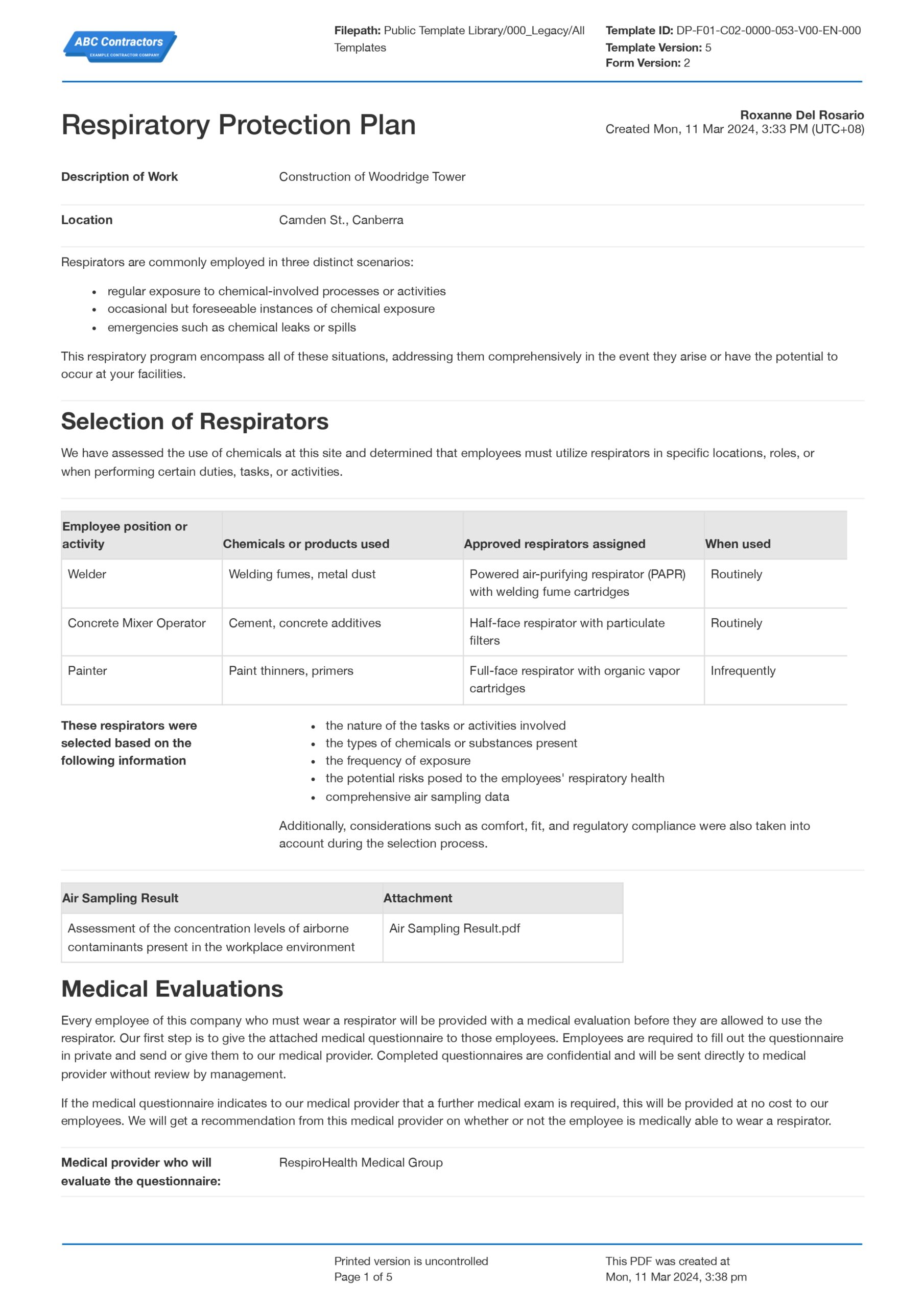
Create better respiratory protection awareness with this safety talk
Improve your respiratory protection plan management with digital solutions
It’s understandable that each workplace has differing respiratory protection requirements given that different industries require different respiratory protection plan. The plan provided as a sample is easy to customise and if changes need to be made, in manual methods the old version must be removed from storage so that the new version can replace it and to implement the changes, senior staff need to brief team supervisors on the new plan, who then need to inform their own teams. Generally, respiratory plans such as these are recorded using individual forms and can be difficult to access by workers when performing their work tasks, which reduces their overall effectiveness.
This is why many companies are now using a digital respiratory protection plan app to manage all their respiratory protection plans. By using an application, you can deploy new version of a plan to a worksite at the touch of a button and inform workers at all levels in real time that changes have been made. Workers can also have access to their workplace's plan on their mobile devices, allowing them to refer to important respiratory protection information when they need.
This article did not only answer what is respiratory protection but also tackled the main things you need to know regarding respiratory protection in the workplace, what does the law say about it with specific from OSHA, and HSE/COSHH and identifying the different types of respiratory protection and the different contaminants that it protects and finally how to design respiratory protection plan for your company with the use of digital solutions.

Asbestos Management Plan template
Ensure you prepare for, manage and handle asbestos properly throughout your projects.

PPE Inspection Checklist template
Make your PPE inspection checklists easy to complete directly on site, and then download, print or share the results.

OSHA Asbestos Inspection Checklist template
Keep your team safe when handling asbestos with this OSHA Asbestos Inspection Checklist template.
